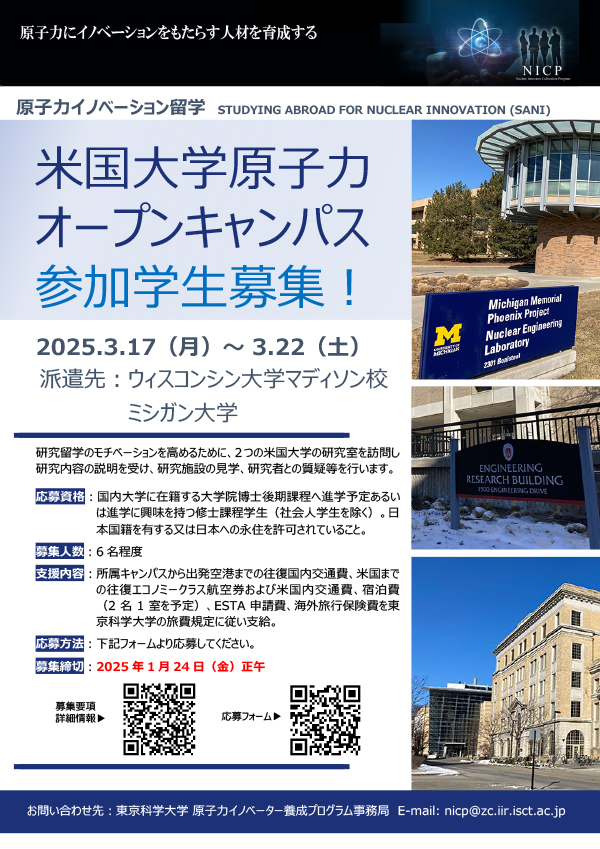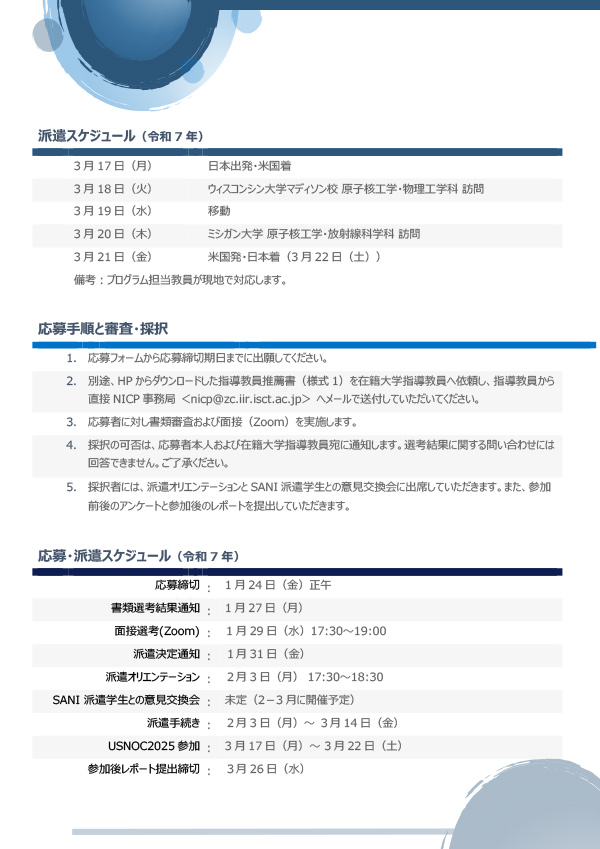Four students participated in the USNOC2025
The Nuclear Innovator Cultivation Program (NICP) held the U.S. Nuclear Open Campus 2025 (USNOC2025) from March 17 to 23, 2025, to increase graduate students’ motivation for research study abroad. Four graduate students enrolled in a Japanese university who have been accepted into the doctoral program or are interested in pursuing one participated in the USNOC2025. They visited the University of Wisconsin-Madison and the University of Michigan, accompanied by Professor Toru Ohara, the Program Chair. Participated students are as follows.
| Name | University | Affiliation | Grade |
|---|---|---|---|
Risa KUNITOMO |
Institute of Science Tokyo |
School of Environment and Society, Department of Transdisciplinary Science and Engineering, Graduate Major in Nuclear Engineering |
M2 |
Toshiki SAGA |
Kyoto University |
Graduate School of Energy Science, Department of Socio-Environmental Energy Science |
M2 |
Shun NUKAGA |
Waseda University |
Graduate School of Advanced Science and Engineering, Cooperative Major in Nuclear Energy |
M1 |
Koji FUJIKURA |
Tohoku University |
School of Engineering, Department of Quantum Science and Energy Engineering |
M2 |
On March 18, the group visited the Department of Nuclear Engineering and Engineering Physics(NEEP)at the University of Wisconsin-Madison(UW). After touring the university's research reactor under the guidance of Professor Paul Wilson, the Department Chair, they visited UW’s three research facilities: the tokamak experimental facility Pegasus-III, the ion beam research facility IBL, and the helical experimental facility HSX. During the tour, they exchanged opinions with the graduate students working in each laboratory. After that, the participating students received an overview of the department from Professor Wilson, and then took part in a lunch meeting with NEEP graduate students, where they gained meaningful information about research life and daily activities at the U.S. University.
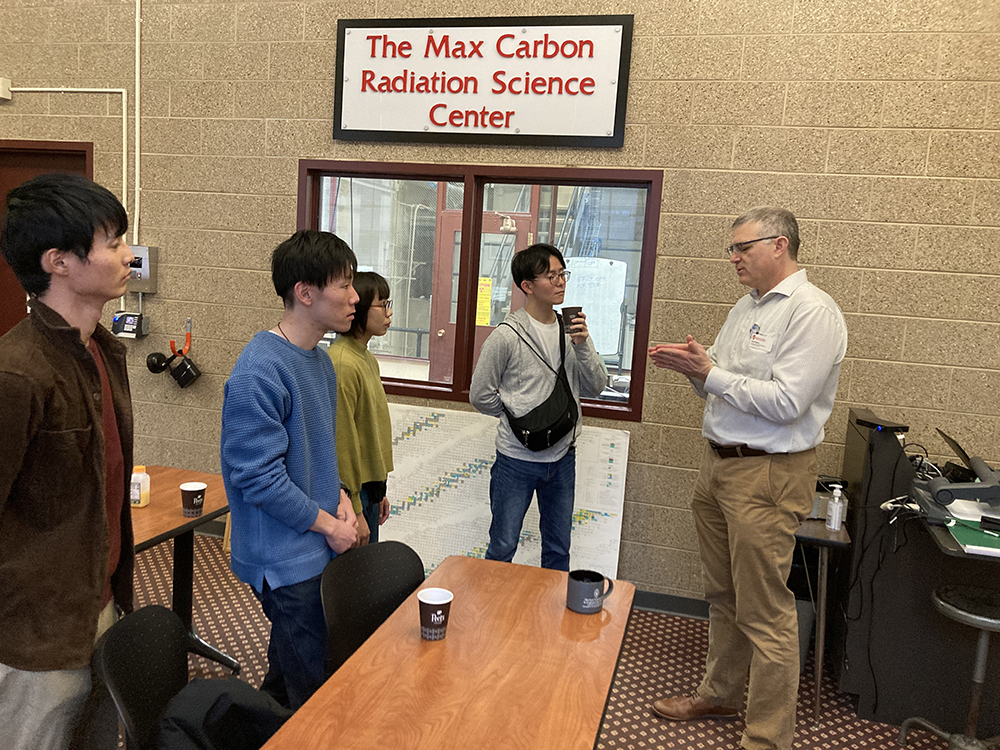
Visit to the UW Nuclear Reactor
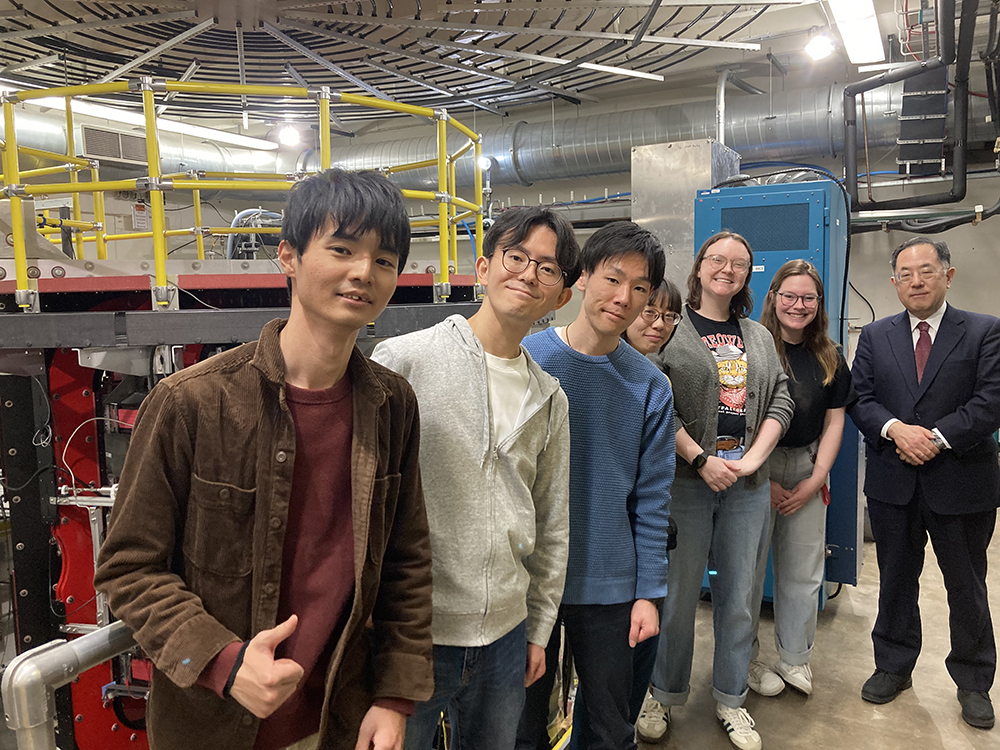
Visit to the tokamak experimental facility Pegasus-III and discussion with graduate students
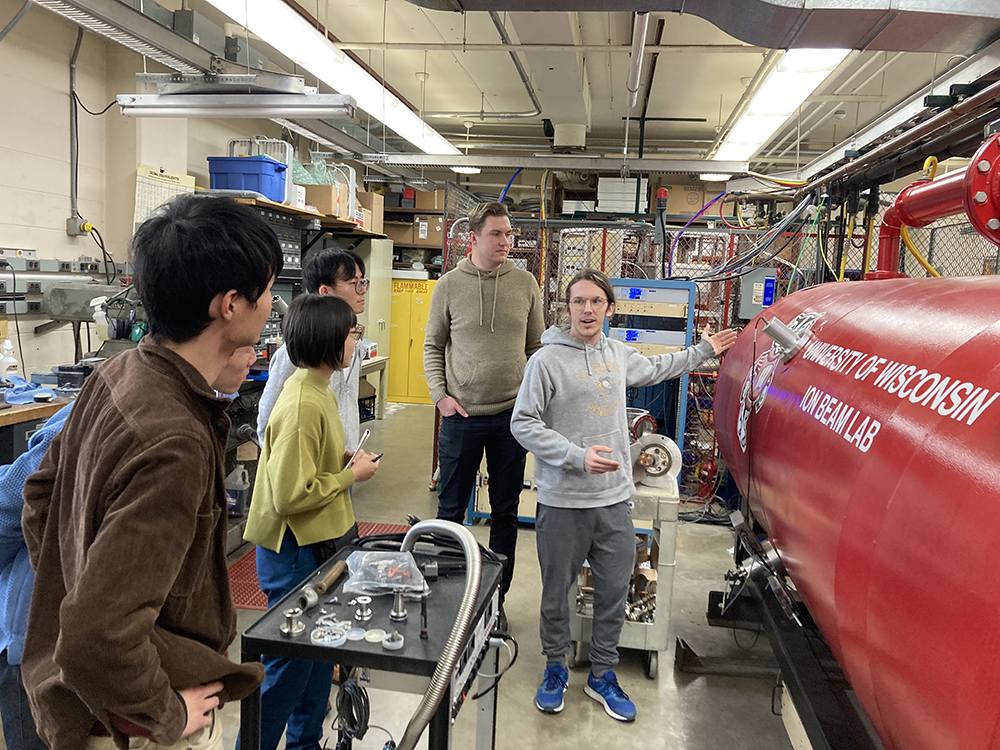
Visit to the Ion beam research facility and discussion with graduate students
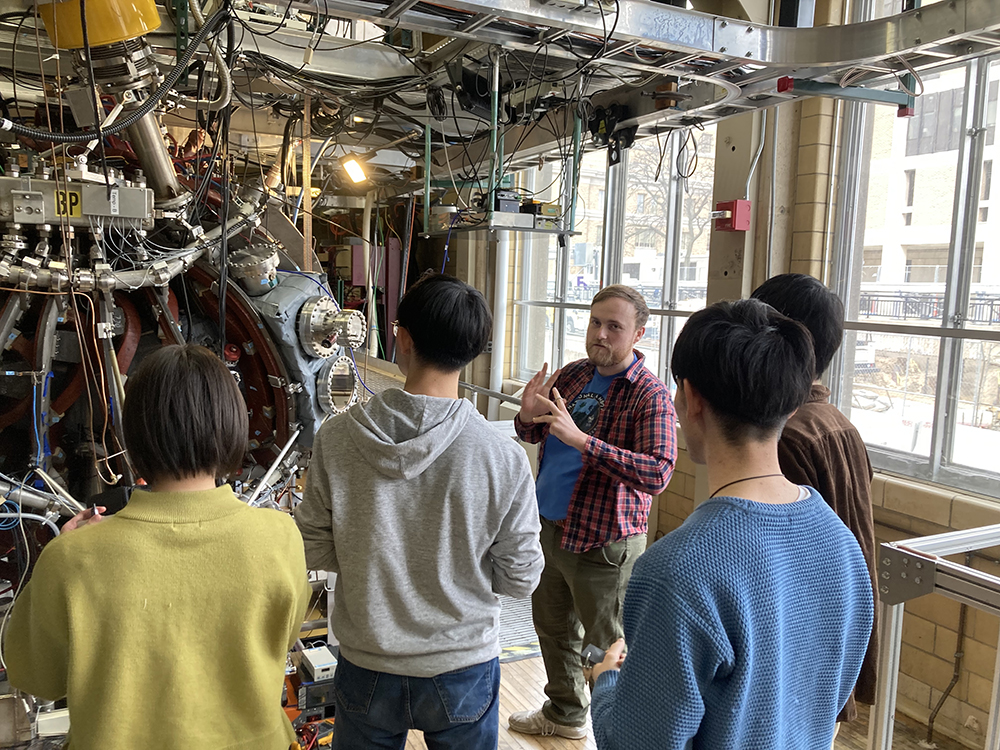
Visit to the helical experimental facility HSX and discussion with graduate students
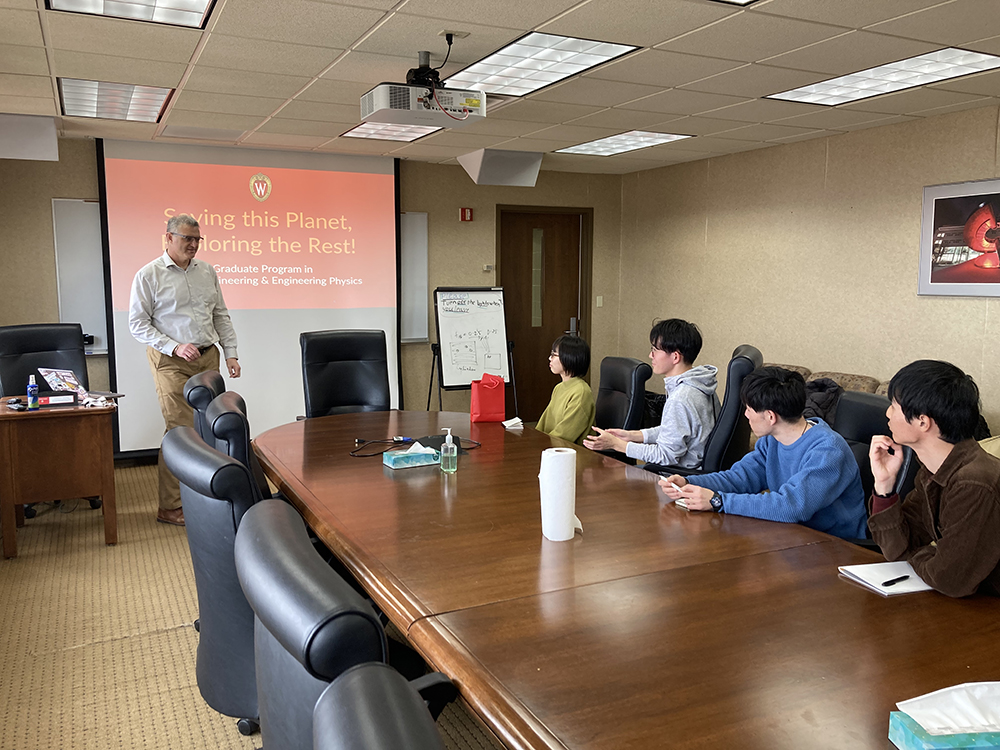
Department Overview by Prof. Wilson
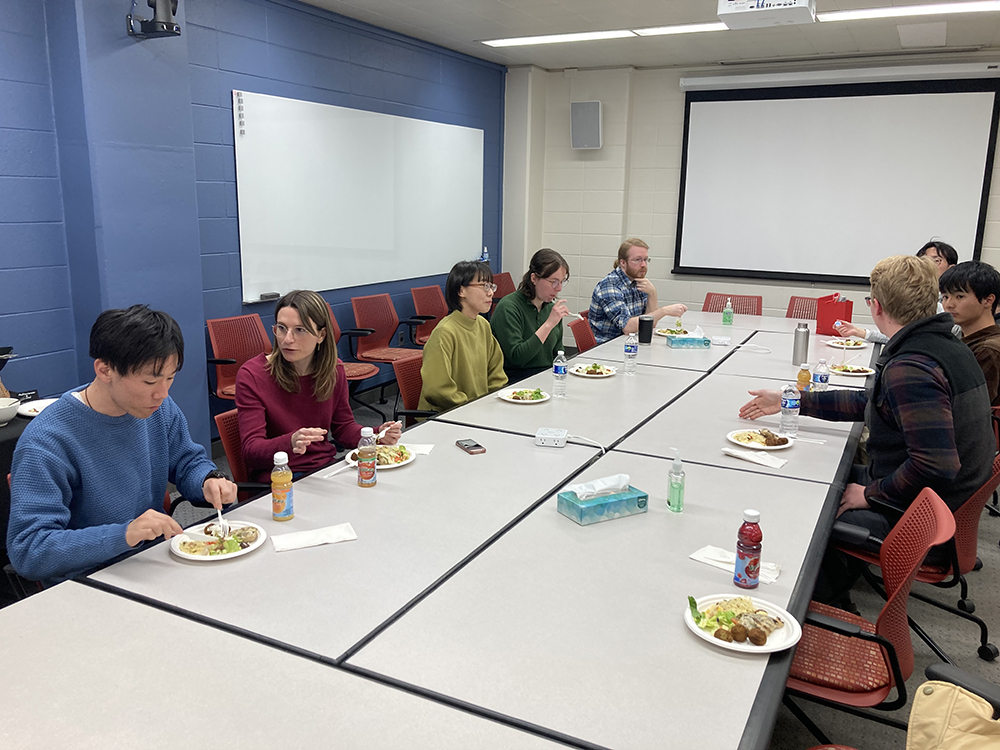
Lunch meeting with NEEP Graduate Students
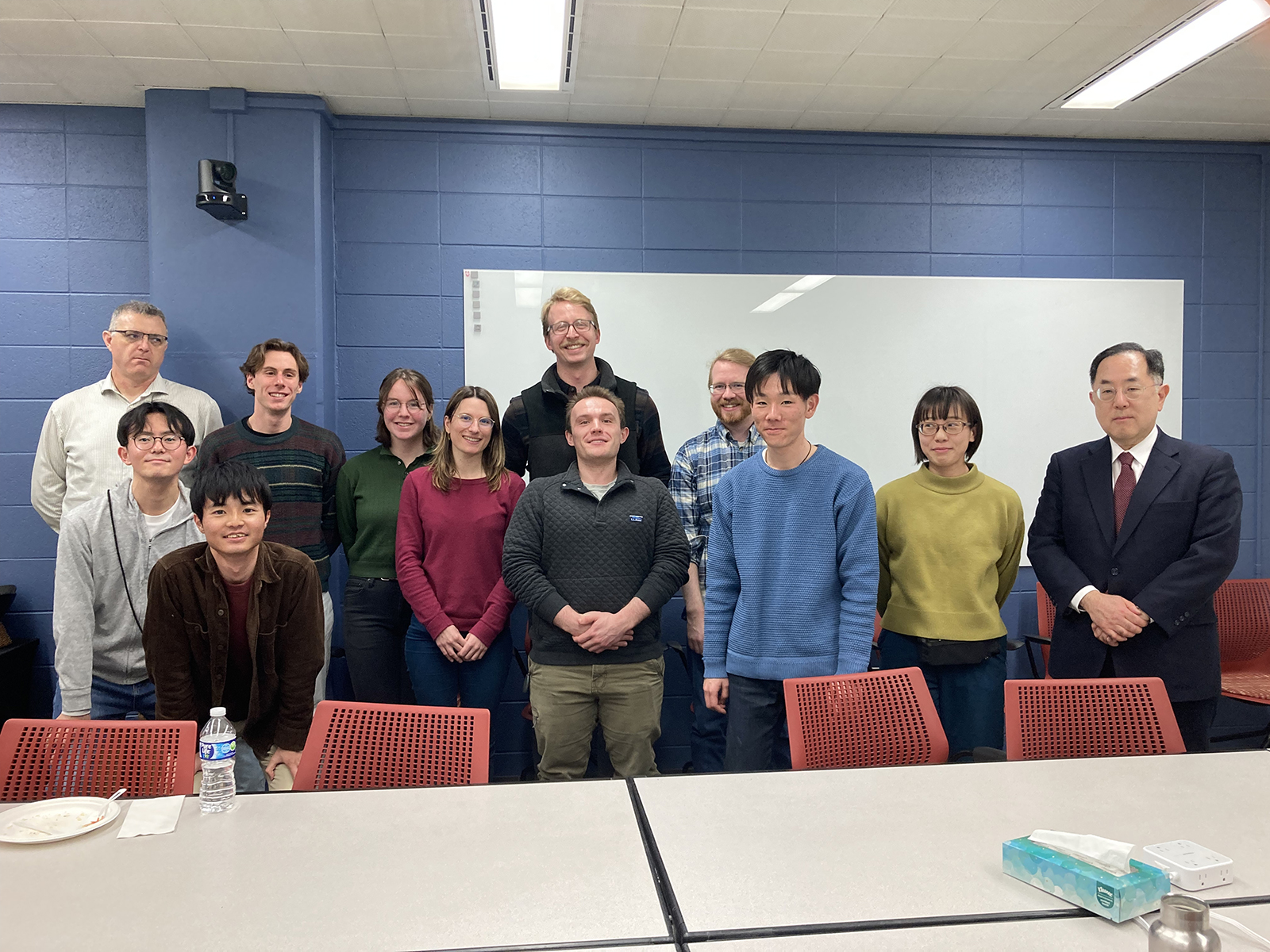
With the participants in the lunch meeting at the University of Wisconsin-Madison
On March 20, the group visited the Department of Nuclear Engineering and Radiological Sciences at the University of Michigan. After receiving an overview of the department from Professor Todd Allen, the Department Chair, they visited the university’s three laboratories: the Michigan Ion Beam Laboratory(MIBL), the Thermal Hydraulics Laboratory(CSRB), and the Neutron Science Laboratory. They received explanations of each laboratory’s research facility and exchanged opinions with the graduate students and researchers working there. Then, the participants had a lunch meeting with the department's professors, then meetings with Professor Igor Jovanovic and Professor Won Sik Yang, which took place in the afternoon. Through these meetings, participating students deepened their understanding of research activities in the United States.
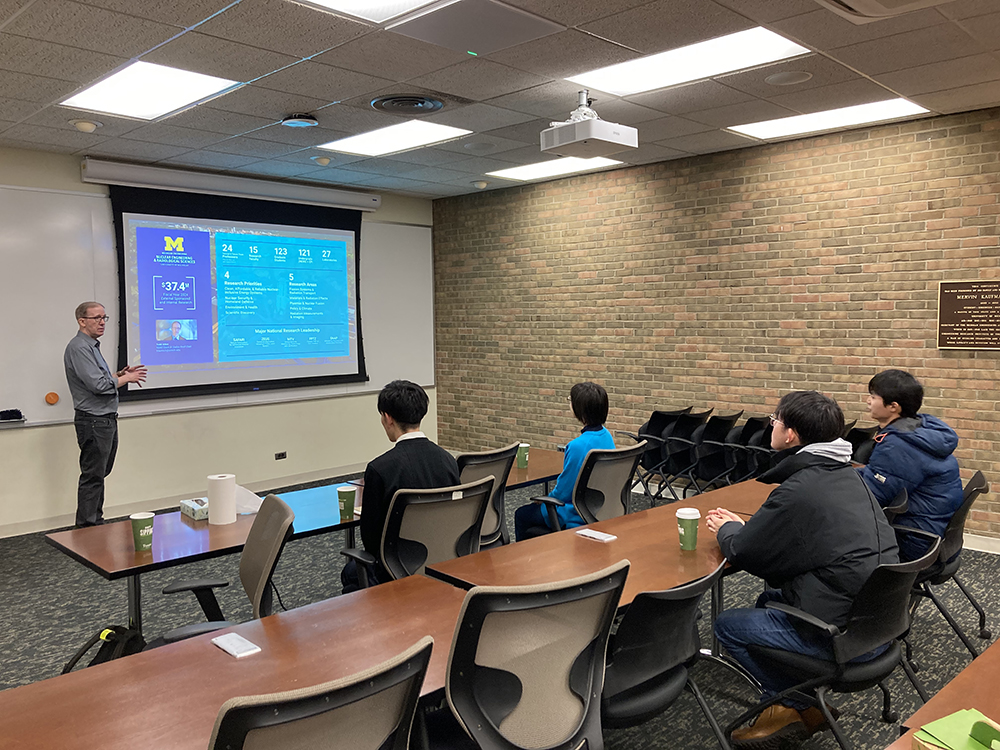
Department overview by Professor Allen
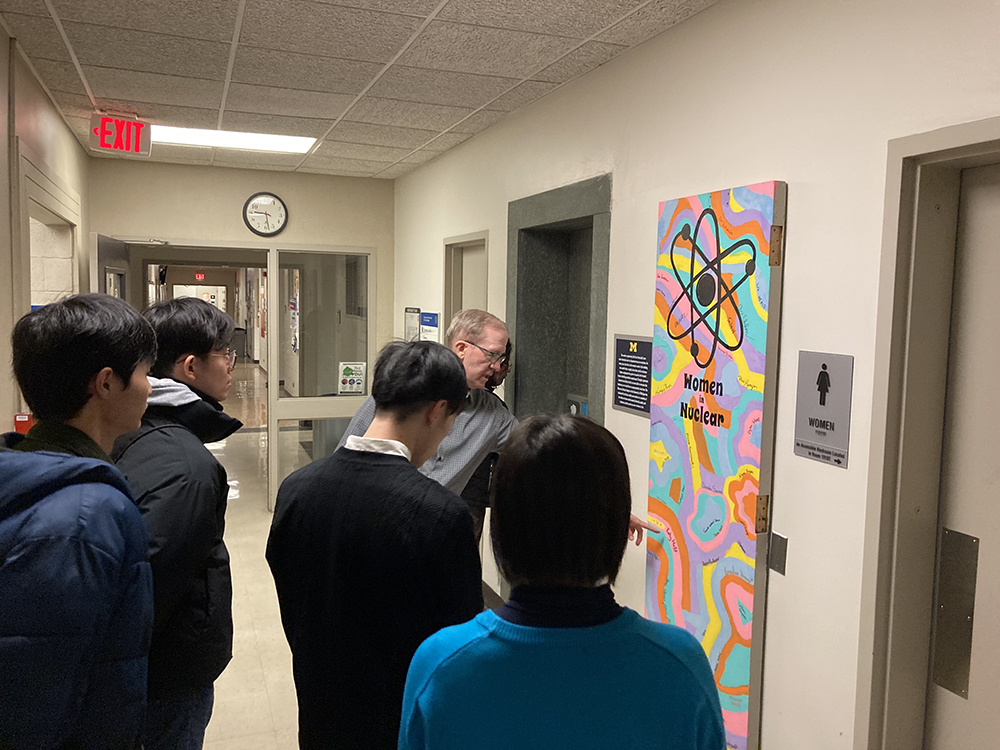
In front of the department’s toilet door, a symbol of the student-led campaign for gender equality
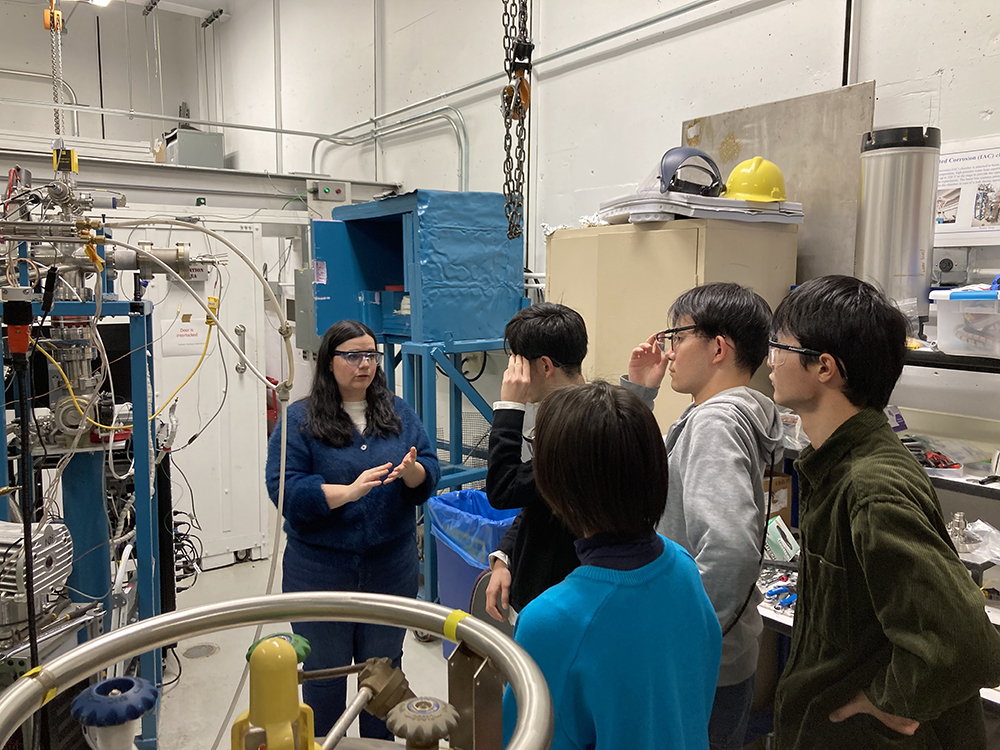
Visit to the Michigan Ion Beam Laboratory(MIBL) and discussions with graduated students
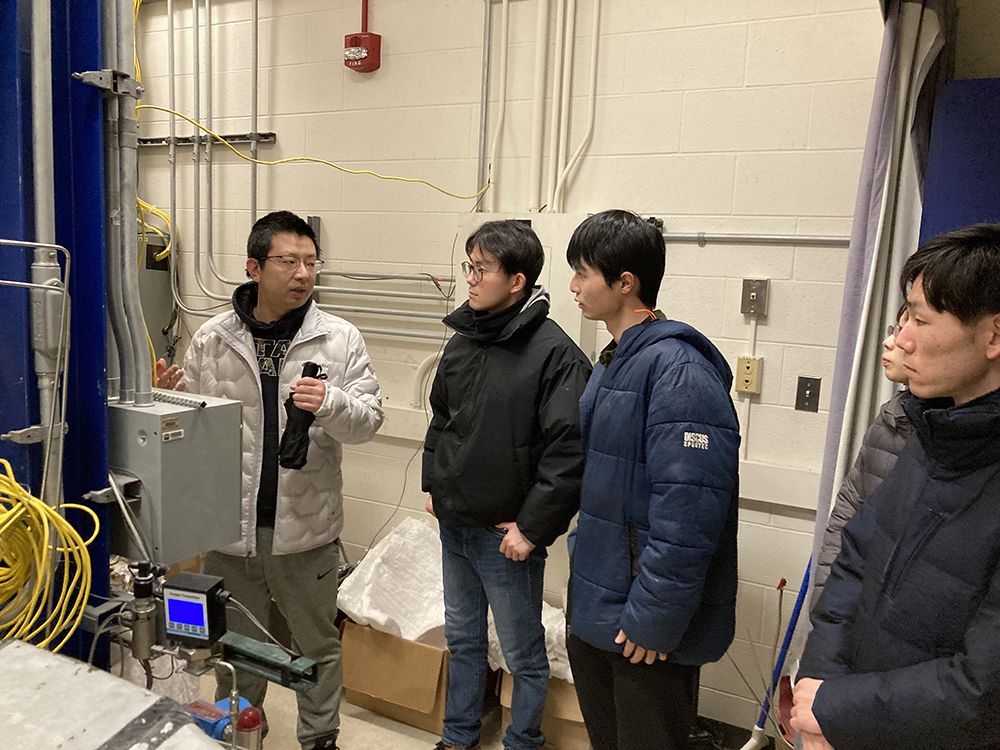
Visit to the Thermal Hydraulics Laboratory(CSRB)and discussions with graduated students
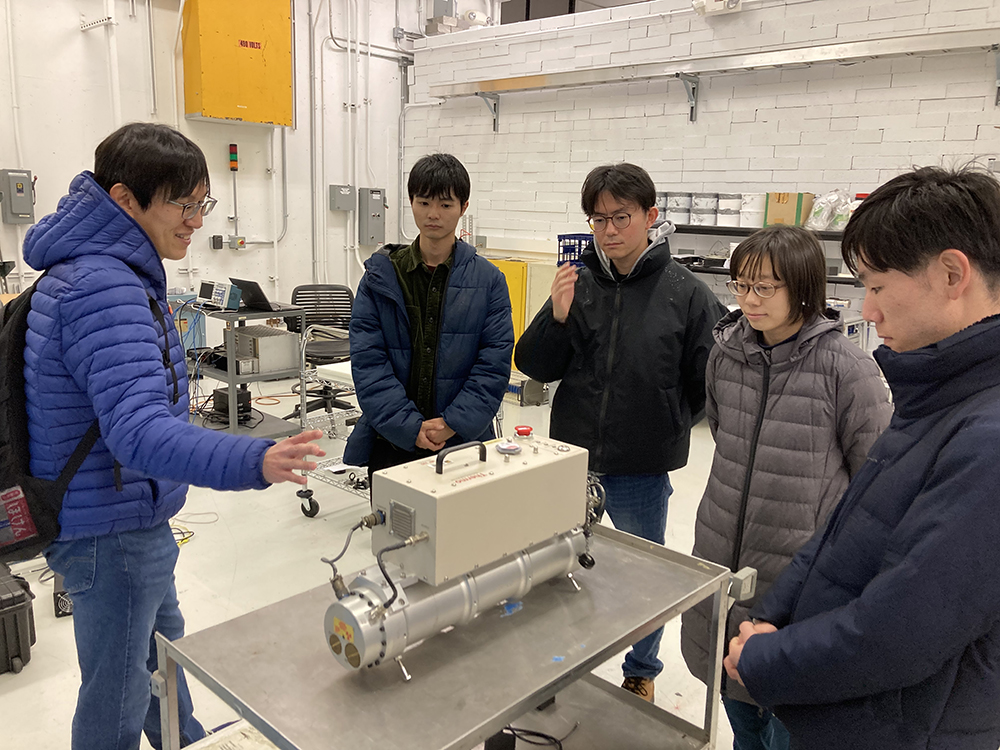
Visit to the Neutron Science Laboratory and discussions with the researcher
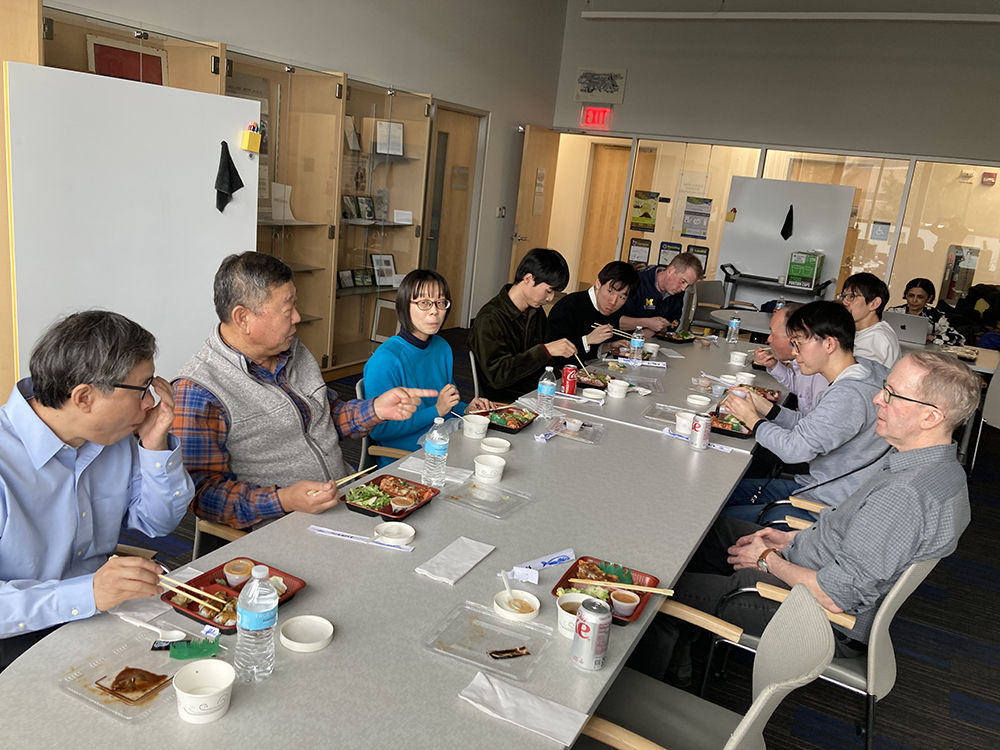
Lunch meeting with professors of the Department of Nuclear Engineering and Radiological Science
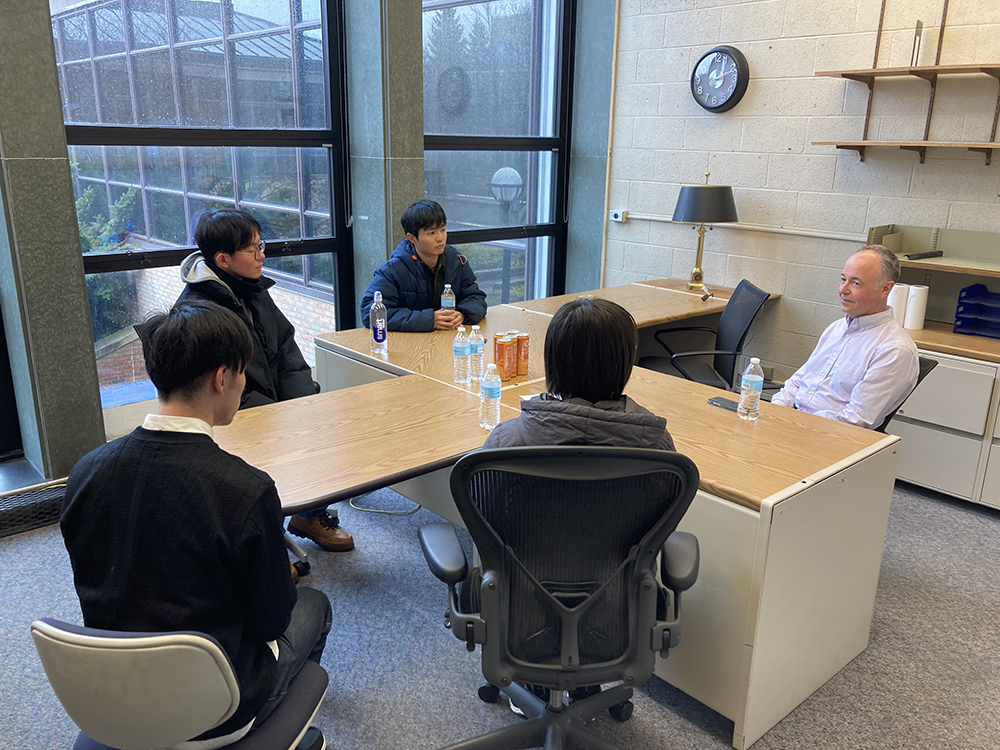
Meeting with Professor Igor Jovanovic
Voices from Participating Students
- Participating in USNOC2025 has increased my interest in studying abroad at a university in the United States. In particular, visiting research facilities and hearing about research activities from the graduate students and professors there has given me a clearer image of research activities in the US.
- By participating in USNOC2025, I was able to gain a clear understanding of studying at a university in the United States. I had never been to the United States before, and my ideas about studying abroad there were quite vague, but USNOC2025 helped me to think about my plans in much more concrete terms. As a result, I now would like to study abroad even more than before.
- I have had a vague longing to study abroad someday. However, I was also feeling anxious, and I had not been able to realize my plan. Participating in USNOC 2025 made me understand that the anxiety came from the fact that I did not have a clear image of myself studying abroad. Now that I have visited two US universities and have its clear vision, studying abroad has become a strong option for me during and after my doctoral program.
- USNOC2025 enabled me to re-examine the position of my study abroad in the US during my doctoral course and deepen my purpose for studying abroad. I would like to develop a research plan at a US university and make steady preparations to further develop my research.



